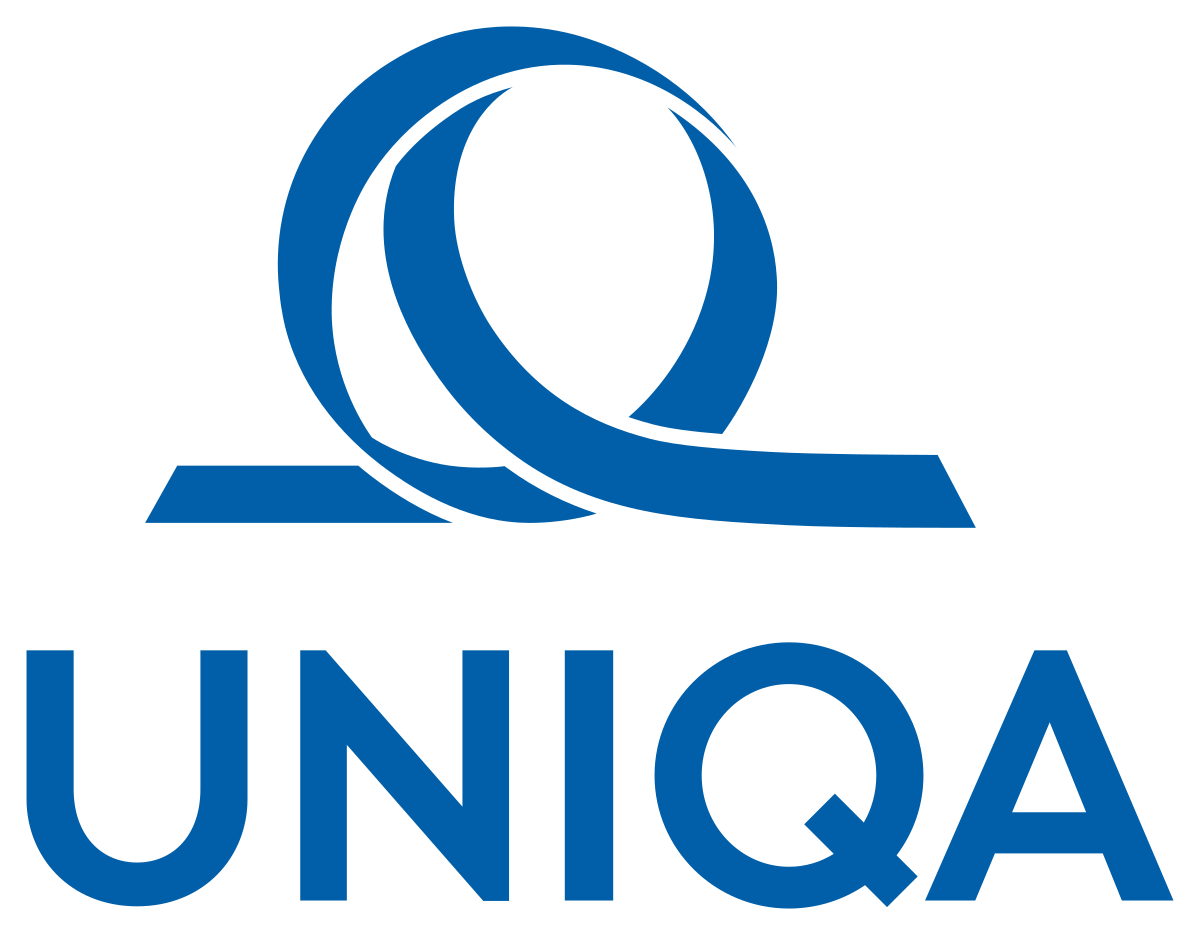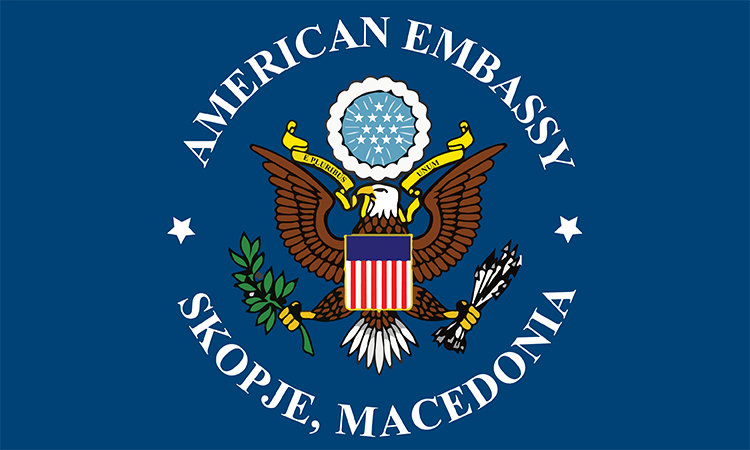Cloud Fiber Line
Unite your cloud servers and offices into one private network
The Cloud Fiber Line service integrates the LAN networks of your physical offices with your Cloud Private Network, using direct cable connections to your sites via a high-speed fiber network that operates independently of the Internet.Once integrated, computers and other IT devices in your offices can establish secure direct connection with guaranteed bandwidth to your virtual private servers, dedicated servers and other fiber optic endpoints.
Available in:  Macedonia
Macedonia Serbia
Serbia Montenegro
Montenegro Bosnia
Bosnia Croatia
Croatia Slovenia
Slovenia Bulgaria
Bulgaria Kosovo
Kosovo
 Macedonia
Macedonia Serbia
Serbia Montenegro
Montenegro Bosnia
Bosnia Croatia
Croatia Slovenia
Slovenia Bulgaria
Bulgaria Kosovo
KosovoAdvantages
- The isolated and dedicated network for your virtual servers is free-of-charge. You can choose on your own which private IPs to be assigned to the servers.
- Guaranteed bandwidth and very low latency between long-distance locations, which is very important for real time applications.
- Private communication because packets travel outside the Internet.
- Easy to maintain and migrate since no public IP addresses are involved.
- Lines terminate at Ethernet interfaces, enabling easy integration with your switching and routing devices.
- Ethernet as underlying protocol, allowing you to run your own network technologies on top of it, like VPN and custom QoS policies.
Robust and Redundant network
Our network architecture is designed to serve mission-critical and business-critical systems, ensuring maximum transfer rate, low latency and multi-level redundancy for highest level of service quality. The network is connected to the leading global and regional tier1/tier2 networks, over protected and geographically independent fiber lines.Local Network
Interspace operates its own fiber-optic network in Macedonia, spanning over 1,500 kilometers. The network extends to nearly all cities and border crossings. We have our most extensive coverage in the capital city, reaching all districts.The core network features terabit capacity for switching and throughput. Every user-side port has dedicated throughput capacity because every single L2/L3 device in our network (models verified by Tolly and Miercom testing) provides line-rate non-blocking forwarding capability. This means they can process maximum bandwidth for all frame sizes (64-1518) on all ports simultaneously.Regional Network
On a regional level, Interspace operates a network with a total length of around 2000 km. It functions in a redundant topology with two major rings on the following routes:- Macedonia - Bulgaria - Serbia - Slovenia - Croatia - Bosnia - Montenegro - Kosovo - Macedonia
- Macedonia - Greece - Bulgaria - Macedonia
- Macedonia: Located in Interspace data centers in Skopje and Deve Bair.
- Bulgaria: Located in a top-class independent data center.
- Serbia: Located in a top-class independent data center.
- Greece: Located in a top-class independent data center.
Global Presence
For our cloud and online video platform, Interspace has an IT infrastructure in the following regions:- Europe: Germany, Netherlands, France, United Kingdom, Austria, Macedonia, Serbia, Bulgaria, Greece.
- North America: USA, Canada.
- Asia/Oceania: Australia, Japan, Singapore.
First-Class Fiber Infrastructure
Interspace's fiber network is designed according to all relevant ISO standards and constructed by following strict procedures, ensuring compliance with the highest quality requirements. We hold the highest accreditation for network infrastructure design, the A-grade license, attesting to our capability to design high-grade fiber optic networks.We have our own teams and equipment for the entire process of constructing, operating and maintaining the network. We employ fusion splicing instead of mechanical splicing of the fibers, ensuring long-term durability and reliability. The link quality is verified through extensive OTDR, RFC 2544 and ITU Y.1564 measurements to guarantee the best transmission.We conduct continuous 24/7 proactive monitoring on every segment of the infrastructure. At the root level, we reserve two fibers in each cable for measuring the general cable condition. We monitor multiple components, such as power supplies, temperature, and traffic, in every network device, including constant verification of optical power levels at each end-point interface. This allows us to act quickly and flawlessly, ensuring the guaranteed SLA and connection uptime.Highest standards
Interspace operates in accordance with the highest standards and adheres to strict procedures, regularly validated through certifications from TÜV NORD CERT GmbH, as detailed below:- ISO 27001: Certification for our system managing information security.
- ISO 20000-1: Certification attesting to our management processes for the effective delivery of IT services.
- ISO 22301: Certification for ensuring business continuity in the event of an incident or disaster.
- ISO 45001: Certification for our management system which ensures workplace safety and health for our employees.
- ISO 9001: Certification for our quality management system.
- ISO 14001: Certification attesting to our responsible environmental management system.
- License A for design: The highest accreditation for designing telecommunication infrastructure projects.
- License A for construction: The highest accreditation for building telecommunication infrastructure projects.
Passion for Best

Featured Clients
Finance
Banks, insurance companies, funds and other financial institutions are rapidly transforming into agile and e-communication-friendly enterprises. Interspace's solutions boost this transformation by providing premium-grade connectivity, secure isolated fiber lines between bank branch sites, robust turn-key VPN networks for secure data transmission, dedicated cloud services for critical applications and data storage, and more. This helps them to enhance operational efficiency, improve customer service and comply with regulatory requirements.
Software Development
Effective communication and server infrastructure reduce collaboration time and speed up market delivery for software development companies. Our solutions enhance data flow between globally distributed engineering teams, boosting efficiency. We provide VPN for secure multi-site connectivity, private networks for isolated communication, cloud servers for scalable computing and high-grade internet connectivity. We support leading development companies with global operations in Canada, the USA, the Netherlands, Denmark, Sweden, Austria, Germany and other countries worldwide.
Public Sector
Government agencies, municipalities and other organizations in the public sector are required to follow the trends in the era of rapid digital transformation. Interspace's solutions ensure this by providing cloud services with disaster recovery for safeguarding their operations 24/7/365, dedicated fiber connections and robust VPNs for secure and efficient inter-agency communication, high-grade internet, data center colocation, an online video platform for community engagement ,and more.
PHI - Dental Clinical Centre
Institute for Transfusion Medicine
Manufacturing
The manufacturing and industrial sector rely on real-time data and robust communication networks to optimize production processes and ensure operational efficiency. Interspace provides high-capacity, low-latency connections, cloud services for scalable computing, data center colocation for secure data storage and private Ethernet networks that support automation, remote monitoring and data analytics. Our solutions help industrial clients enhance productivity, reduce downtime and maintain competitive edge in a rapidly evolving market.
Trade
The trade & transport sector depends on efficient communication networks to track shipments, ensure timely deliveries, manage transactions, supply chains and customer interactions. Interspace provides high-speed internet, secure VPNs, cloud services for scalable business applications, dedicated servers for critical workloads and Private Ethernet networks that enable seamless data exchange, online trading and real-time inventory management. Our solutions help trading companies stay competitive, streamline operations and enhance customer experience.
Media
The media industry relies on high-speed, reliable networks to distribute content, collaborate on projects and manage digital assets. Interspace provides an online video platform for broadcasting and video on demand, high-capacity and low-latency connections, cloud services for content distribution to multiple locations in different parts of the world and Private Ethernet lines that support live broadcasting and video production. Our solutions help media companies enhance production quality, streamline workflows and reach more audiences worldwide.
Education
Educational institutions are upgrading their systems to improve learning experiences and streamline administrative processes. Interspace's solutions support these advancements by providing robust cloud services for scalable computing, secure VPNs for safe remote access, high-speed internet for seamless online learning and disaster recovery solutions for secure storage of sensitive information.
Energy
The energy sector requires reliable and secure communication networks to manage critical infrastructure and support remote operations. Interspace's solutions offer high-speed, resilient connectivity that enables efficient data transfer between control centers, power plants, and field sites. Our secure VPNs and dedicated fiber lines ensure uninterrupted communication, supporting the operational integrity and security of energy networks.
Diplomacy
Diplomatic missions demand the highest levels of security and reliability for their communication needs. Interspace offers customized solutions that ensure secure, encrypted and uninterrupted data transmission. Our carrier-grade internet, dedicated lines, cloud services for secure data storage and processing and Metro Ethernet networks enable embassies and consulates to maintain confidential communications, access global networks and support their diplomatic activities effectively.
Testimonials for Cloud and Hosting services
The ONE group, including the institutions and companies ONE Leasing, ONE Finance, ONE Auto and ONE Rental, is a business built on the principles of commitment, expertise, innovation and efficiency. In our operations, we use cloud virtual servers for various applications used by our employees and customers.We have migrated all our virtual servers from Amazon Web Services (AWS) to Interspace. That really helped us to solve the problem with increased costs caused by the needs for higher capacity servers. The simplicity of the management panel, along with the tools for data protection at a safe distance (disaster recovery) and the exceptional performance of the servers, gives us confidence that our business processes have a stable IT infrastructure.
PrimePoint Partners is the leading management consulting company in the Western Balkans, specializing in implementation of high-impact economic development programs, strategic advisory, business acceleration and access to finance.We're using Interspace's cloud virtual servers for our extensive documentation system, collaboration and project management tools, and private online meetings. We're also using Interspace's cloud metro service, which enables us to seamlessly unite our offices in Macedonia (Skopje, Ohrid) and Montenegro (Podgorica) into one unified office network.The reliability of their systems enable the services we use to be constantly up and running. Their data protection technologies allows us to activate the disaster recovery solution and daily backups in one click.Our experience with Interspace cloud services has been overwhelmingly positive. Interspace brings a level of professionalism that is vital for the complex processes we conduct and the quality of service we provide to our clients.
Automotive AI Solutions is developing cutting-edge autopilot technology, with a mission to set new standards in automotive safety and efficiency. We decided to switch to Interspace's HPC Elastic Cloud VPS when our project required reliable HPC computing with enhanced storage support, designed for massive, low-latency data throughput. This decision enabled us to scale up seamlessly without any loss in performance and to efficiently train models and run simulations.Interspace's Cloud VPN Multisite service allows our team to stay connected through daily data transfers and securely access computing resources. This seamless connectivity has significantly accelerated our timelines, enabling us to iterate and innovate more quickly.Interspace's commitment to high availability and rapid deployment has given us the confidence to push the boundaries of what's possible in the world of automotive AI.
Macedonian Radio Television (MRT) is the public broadcaster, which has more than 700 employees and associates that work day-by-day to provide production and broadcasting of radio and TV programmes of all genres.MRT is using the Interspace cloud and online video platform for its live and on-demand video services. The cloud solution involves servers that span on 3 continents, architectured for lowest latency response based on visitors geo location and automatic replication for data protection.Hundreds of thousands of videos, as well as 12 live TV and radio channels are being flawlessly streamed by their cloud servers. The videos reach our audience in the highest quality, no matter where they watch and what their Internet connection quality is.Their platform does all the things in the background, including multi-resolution re-encoding and distribution of the same content across multiple servers, enabling our services to seamlessly stream content to thousands of simultaneous viewers. Our admins love how easy the platform is to use, yet it executes such complex processes undernit.
The Macedonian Academy of Sciences and Arts (MANU) is the national highest scientific, scholarly and artistic institution founded in 1967. MANU has published thousands of scientific papers from all fields of science and arts.For the needs of advanced digitalization and electronic databases protection, in 2017 MANU selected the Interspace Cloud Platform. To this day we are a client of Interspace because we have had nothing but positive experiences, especially with the stability of their systems, amazing technical support and easy-to-use web management tools.
Testimonials for Communication services
Cosmic Development is a global provider of skills, knowledge, and expertise in the IT industry. We've been partners with Interspace for years now, and they've been nothing short of amazing for us! We have both internal and client facing services running stable with no network hiccups on our Interspace connection. We've recently survived a full office migration and, thanks to Interspace, their team, their pro-activity and their attitude, we've had 0 downtime on our Internet connection.Their flexibility and response time are definitely a key factor in our relationship. Between our two offices, in two different cities, our Internet connection and services are always running and our employees are always covered. I would highly recommend Interspace to everyone, as I am more than thrilled to be working with them!
Causeway Connect is a multi-disciplinary team providing services in 20 countries, in the range of software development, helpdesk, HR and recruitment, finance and accounting, sales and marketing.As a company that services 300+ clients worldwide, we are very pleased that Interspace is able to consistently provide reliability and stability of the multiple Internet connections it delivers to us. We're especially impressed by their commitment to excellence and professionalism. The efficiency in service delivery and technical support are also worthy of a special mention, particularly to those looking for best-in-class Internet services.
Nexeon Technologies is a global technology company offering fully managed hosted infrastructure solutions, from personal & business website hosting, to virtual private cloud units.Interspace dedicated hosting servers are an important part of our cross-continental infrastructure. We are delighted with Interspace's continuous professional support and superb network.
Hi-Tech Corp. is a globally renewed company and the European leader in Printed Circuit Boards technologies. We serve top-level customers such as Continental, Siemens, Bosch and alike. It is of vital importance in our business to use communication technologies with highest reliability and uptime.Hi-Tech Corp. turned to Interspace for their feature rich technology for high-grade connectivity services. With Interspace's Dedicated Internet Access service, backed by their pro-active technical support, we are able to leverage our advanced applications and tools and communicate with our international partners with ease.
We're a globally recognized TV/video production company with more than 103 international awards. We can state with confidence that Interspace is a highly motivated and responsible telecom provider. Setting up the Internet service was seamless with the help of their dedicated Account Manager, who also provided valuable guidance in choosing the right features for our needs.Their dedicated and talented personnel is proactively securing the quality of service. The selection of Interspace as the Internet provider was certainly a worthwhile decision for our company.





































































 English
English Deutsch
Deutsch Shqip
Shqip